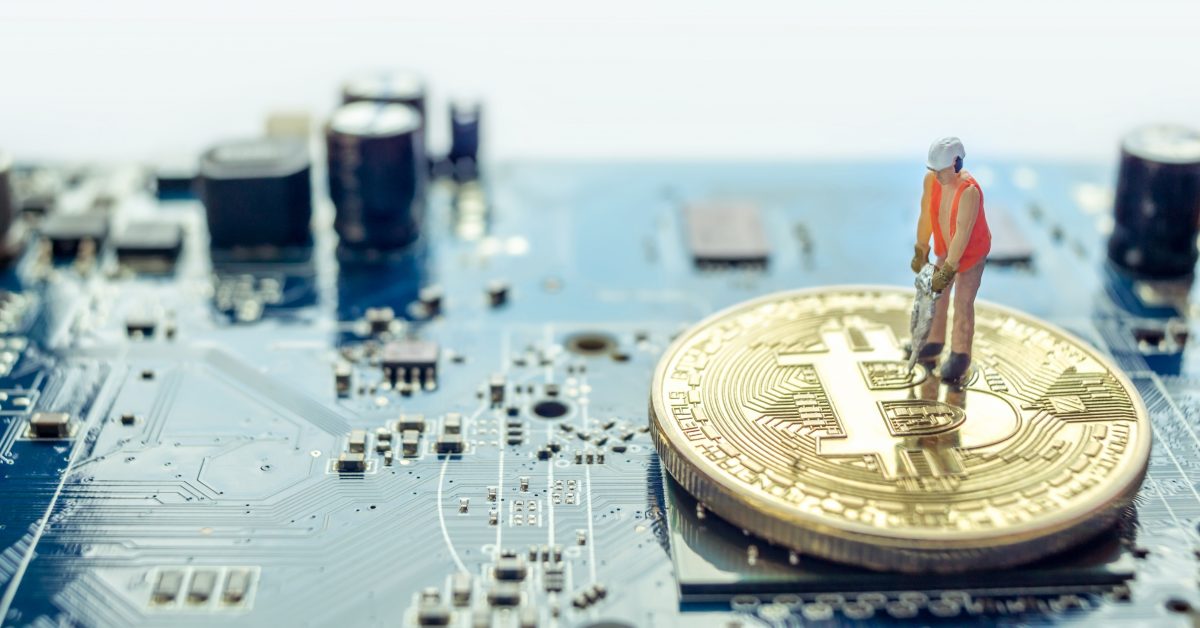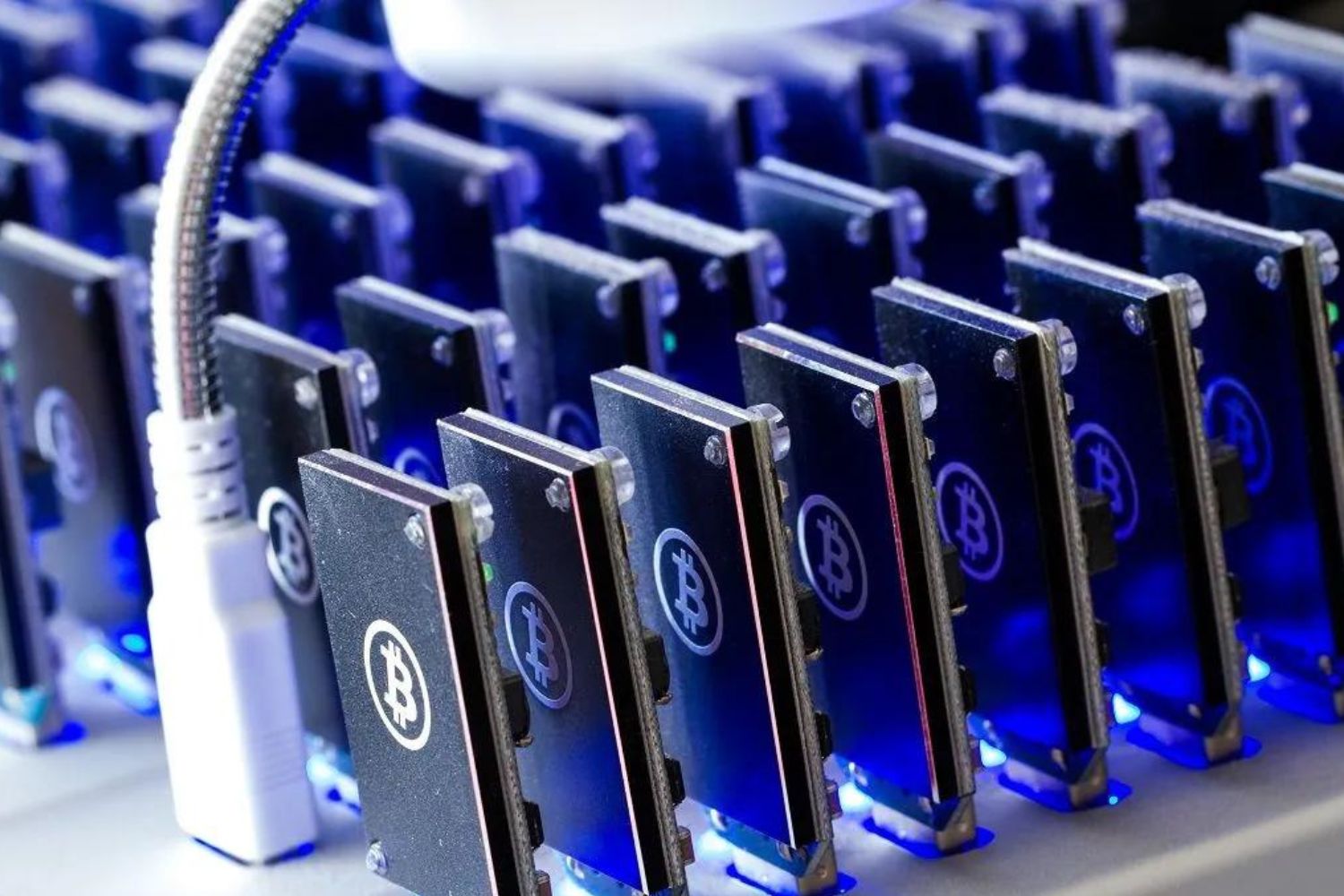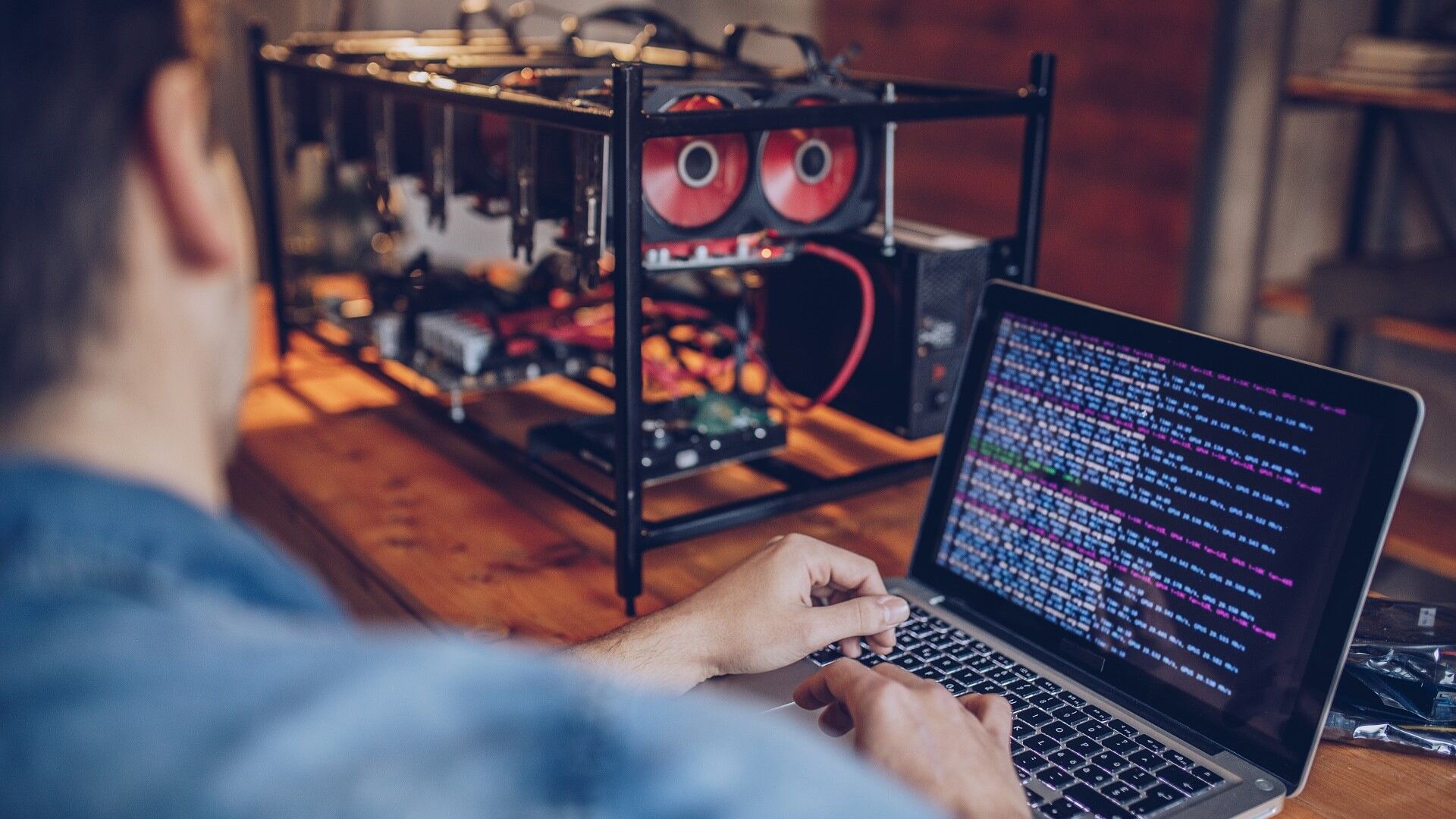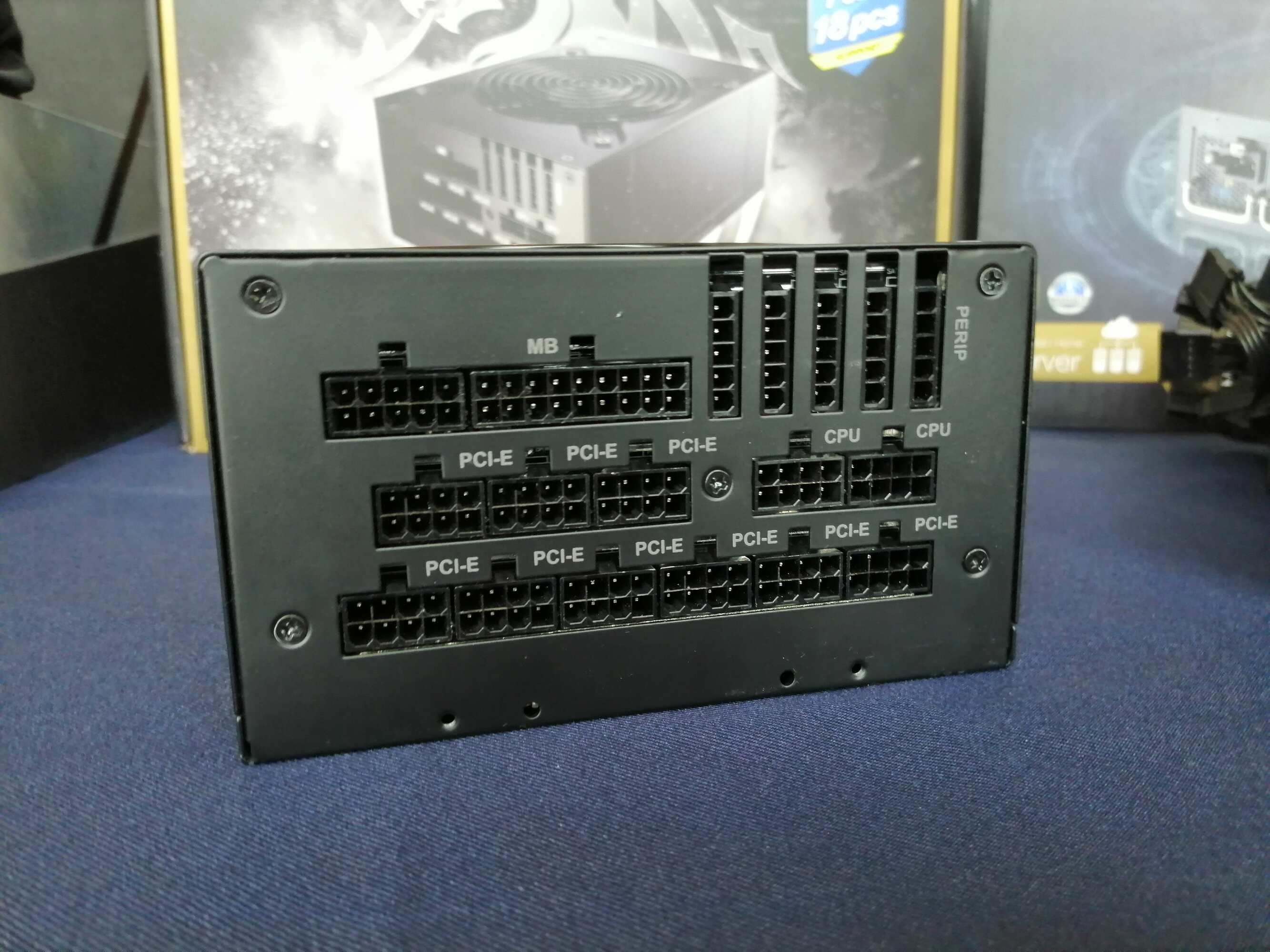Introduction
Bitcoin, the first and most well-known cryptocurrency, has gained considerable popularity and value in recent years. With its decentralized nature and limited supply, many individuals are eager to acquire Bitcoin through various means, including mining.
Bitcoin mining is the process by which new Bitcoins are created and transactions are verified and added to the blockchain – a public ledger of all Bitcoin transactions. This process requires powerful computer systems and significant computational effort. However, one question that arises is: how long does it take to mine one Bitcoin?
The time required to mine one Bitcoin is influenced by several factors, including mining difficulty, hash rate, mining equipment, energy costs, and the current state of the Bitcoin network. Understanding these factors can help individuals assess the feasibility and profitability of Bitcoin mining.
In this article, we will explore these factors in detail, providing insight into the time it takes to mine one Bitcoin and the considerations that miners need to take into account.
The Bitcoin Mining Process
Bitcoin mining involves solving complex mathematical problems using high-powered computers, known as mining rigs. These problems are designed to be extremely difficult and require substantial computational power to be solved. Miners compete to solve these problems, and the first one to find a solution is rewarded with newly created Bitcoins.
The mining process begins with a transaction being submitted to the Bitcoin network. Miners combine these transactions into blocks, which are then added to the blockchain. Each block contains a unique code, called a hash, that is generated by applying a cryptographic function to the previous block’s hash, along with the current block’s data.
To find the correct hash, miners must repeatedly change a small piece of data, called a nonce, in the block header and calculate its hash until a solution is found. This process is known as proof-of-work, as it demonstrates that the miner has put in the required computational effort.
Once a miner finds a valid hash, they broadcast it to the network, and other miners verify its validity. If the hash is accepted, the block is added to the blockchain, and the miner is rewarded with a predetermined amount of Bitcoins, along with any transaction fees associated with the block. This reward incentivizes miners to continue mining and secure the network.
However, as more miners join the network, the difficulty of the mining process increases. This is due to a protocol that adjusts the mining difficulty approximately every two weeks to ensure that new blocks are added to the blockchain roughly every ten minutes. The difficulty adjustment aims to maintain a consistent rate of Bitcoin production, regardless of changes in computational power.
Overall, the Bitcoin mining process is a competitive and resource-intensive endeavor. It requires powerful hardware, substantial energy consumption, and a deep understanding of mining algorithms. The time it takes to mine one Bitcoin varies based on several factors, which we will explore in the following sections.
Factors Affecting Mining Time
Several key factors influence the time it takes to mine one Bitcoin. Understanding these factors is essential for miners to optimize their mining operations and effectively manage their resources. Let’s delve into each factor:
- Mining Difficulty: The mining difficulty refers to the complexity of the mathematical problems that miners must solve to mine new Bitcoins. As more miners join the network, the difficulty level increases, making it harder to find a valid hash. Conversely, if miners exit the network, the difficulty decreases. This adjustment mechanism ensures that new blocks are created approximately every ten minutes. The higher the mining difficulty, the longer it takes to mine one Bitcoin.
- Hash Rate: The hash rate is the speed at which a mining rig solves the cryptographic algorithms. It is measured in hashes per second (H/s) or terahashes per second (TH/s). The higher the hash rate, the more calculations the miner can perform, increasing the chances of finding a valid hash quickly. Miners with higher hash rates have a competitive advantage and can potentially mine Bitcoins at a faster pace.
- Mining Equipment: The type and quality of mining equipment play a crucial role in mining efficiency. Specialized mining hardware, such as ASICs (Application-Specific Integrated Circuits), are designed specifically for Bitcoin mining and offer significantly higher hash rates compared to traditional CPUs or GPUs. Using the latest and most efficient mining equipment can significantly reduce the time it takes to mine one Bitcoin.
- Energy Costs: Bitcoin mining is an energy-intensive process. Miners need to consider the cost of electricity required to power their mining rigs. Areas with lower-cost electricity can provide a competitive advantage, as lower operating costs can increase profitability. Miners must strike a balance between energy efficiency and mining performance to optimize their mining time and profitability.
By considering these factors and making informed decisions, miners can improve their efficiency and profitability. However, it’s important to note that the mining landscape is constantly evolving, and external factors, such as market conditions and technological advancements, can also influence mining time. Miners need to stay updated with the latest trends and adapt their strategies accordingly to stay competitive in the Bitcoin mining industry.
Mining Difficulty
Mining difficulty is a fundamental aspect of the Bitcoin network that impacts the time it takes to mine one Bitcoin. It is a measure of how challenging it is to find a valid hash for a new block. Bitcoin’s mining difficulty is constantly adjusting to ensure that new blocks are added to the blockchain approximately every ten minutes.
The difficulty adjustment mechanism is designed to maintain a consistent rate of Bitcoin production, regardless of changes in computational power. It relies on a mathematical formula that accounts for the total hash power of the network and aims to keep the average block time at ten minutes. If the network’s hash rate increases, indicating that more miners have joined, the difficulty increases accordingly to maintain the desired block time.
The impact of mining difficulty on the time it takes to mine one Bitcoin is significant. As the difficulty increases, miners must dedicate more computational power and time to solve the complex mathematical problems. Conversely, if the difficulty decreases, mining becomes easier, and the time to mine one Bitcoin decreases as well.
It’s worth noting that mining difficulty adjustments occur approximately every two weeks. This frequency ensures that the challenge level remains in line with the network’s hash rate. As more miners enter or exit the network, the adjustment mechanism responds accordingly to maintain the desired block time.
Understanding mining difficulty is essential for miners to make informed decisions about their operations. When the difficulty level is low, miners can potentially mine Bitcoins at a faster rate. Conversely, during periods of high difficulty, the mining process becomes more time-consuming and resource-intensive, requiring more powerful hardware and increased energy consumption.
To stay competitive in the mining industry, miners must consider the current mining difficulty and evaluate the potential profitability of their operations. They may need to upgrade their mining equipment or adjust their strategies to adapt to changing difficulty levels and maintain efficient mining times.
Overall, mining difficulty plays a crucial role in determining the time it takes to mine one Bitcoin. Miners must carefully monitor and understand this factor to optimize their mining operations, control costs, and stay competitive in the ever-evolving Bitcoin network.
Hash Rate
The hash rate is a critical factor that directly impacts the time it takes to mine one Bitcoin. It measures the computational power of a mining rig or the entire Bitcoin network. The higher the hash rate, the more calculations the miner or network can perform per second, increasing the probability of finding a valid hash quickly.
Hash rate is typically measured in hashes per second (H/s) or terahashes per second (TH/s), representing the number of hash calculations that can be performed in a given time frame. As mining technology advances, hash rates have significantly increased, leading to more efficient mining operations.
Miners with higher hash rates have a competitive advantage as they can solve complex mathematical problems faster than their counterparts. This increased computational power translates to a higher chance of successfully solving the proof-of-work algorithm and being rewarded with Bitcoins.
It’s essential to note that the Bitcoin network’s total hash rate plays a crucial role in determining the mining difficulty. As more miners join the network and increase their hash rates collectively, the network’s difficulty adjusts to maintain the average block time of ten minutes. This adjustment ensures that new Bitcoins are produced at a relatively constant rate.
Miners looking to reduce the time it takes to mine one Bitcoin often strive to increase their individual hash rates. They may achieve this by utilizing more powerful mining equipment, such as specialized ASIC (Application-Specific Integrated Circuit) miners, designed specifically for Bitcoin mining. These high-performance rigs offer substantially higher hash rates than traditional CPUs or GPUs.
However, it’s important to consider that hash rates are not the only determining factor. Other factors, such as mining difficulty and energy costs, influence the overall mining time and profitability. Miners need to strike a balance between hash rate, energy efficiency, and operational costs to achieve optimal results.
Monitoring and improving hash rate is an ongoing task for miners. It involves regular hardware upgrades, staying informed about technological advancements, and optimizing mining strategies. By continuously striving to increase hash rates, miners can enhance their chances of mining Bitcoins at a faster rate and staying competitive within the Bitcoin network.
Mining Equipment
The choice of mining equipment is a vital consideration for miners aiming to optimize their mining time and efficiency. The right equipment can significantly impact the speed at which one Bitcoin can be mined, as well as overall profitability.
In the early days of Bitcoin mining, miners would use traditional CPUs (Central Processing Units) and later transitioned to GPUs (Graphics Processing Units) to improve hash rates. However, as the network’s difficulty increased, these general-purpose processors became less efficient, giving rise to specialized mining hardware known as ASICs (Application-Specific Integrated Circuits).
ASIC miners are purpose-built devices designed solely for Bitcoin mining. They offer significantly higher hash rates compared to CPUs or GPUs, enabling miners to solve complex algorithms more quickly. Using ASICs can drastically reduce the time it takes to mine one Bitcoin compared to using traditional mining hardware.
Furthermore, the efficiency of the mining equipment plays a crucial role. More energy-efficient devices consume less electricity while delivering higher hash rates, resulting in improved profitability. Miners must consider the balance between hash rate and energy consumption to optimize their operations and minimize costs.
Another factor to consider is the availability and cost of mining equipment. As new technologies emerge, more powerful and efficient ASIC miners become available. However, these devices often come with a higher price tag. Miners need to assess the cost-effectiveness of investing in new equipment versus using existing hardware.
It’s also essential to stay informed about mining equipment advancements and industry trends. Manufacturers regularly release updated versions of ASIC miners with improved performance and efficiency. By keeping up with these developments, miners can make informed decisions about upgrading their equipment to maximize their mining outputs.
Lastly, proper maintenance and cooling for mining equipment are essential. Mining rigs generate a significant amount of heat and require adequate ventilation and cooling systems to prevent overheating and ensure their optimal performance. Regular equipment maintenance and monitoring help minimize downtime and maximize mining efficiency.
In summary, mining equipment selection is a critical factor in determining the time it takes to mine one Bitcoin. Mining with specialized ASIC miners, optimizing energy efficiency, staying updated with technological advancements, and maintaining equipment properly can greatly enhance mining speed and profitability for miners.
Energy Costs
Energy costs play a significant role in Bitcoin mining, as the process requires a substantial amount of electricity to power the mining rigs. Miners need to consider the cost of energy consumption and its impact on profitability and the time it takes to mine one Bitcoin.
The energy consumption of mining rigs depends on various factors, including the type of mining hardware, the hash rate, and the duration of mining operations. More powerful mining equipment such as ASICs tend to consume higher amounts of electricity compared to traditional CPUs or GPUs. Additionally, higher hash rates require more computational power, resulting in increased energy requirements.
The cost of electricity varies widely depending on geographic location. Miners situated in areas with lower electricity costs have a competitive advantage as they can reduce their operational expenses. Conversely, miners located in regions with high electricity costs may face challenges in maintaining profitability.
To optimize energy costs, miners can employ several strategies. One approach is to choose locations with favorable electricity rates or renewable energy sources, such as hydroelectric or solar power. By utilizing renewable energy, miners can decrease their environmental impact and potentially reduce electricity expenses.
Another strategy is to improve the energy efficiency of mining operations. Miners can achieve this by using more efficient mining equipment or implementing technologies like liquid immersion cooling or advanced cooling systems to minimize energy wastage through excessive heat generation.
Mining farms or collectives can also negotiate power purchase agreements (PPAs) with utility companies to secure lower electricity rates. By establishing long-term contracts, miners can stabilize energy costs and improve their profitability.
Furthermore, monitoring and optimizing energy consumption is crucial for miners. Regular analysis of energy usage patterns, identifying areas of inefficiency, and implementing energy-saving measures can lead to significant cost savings and improved mining efficiency over time.
Energy costs are an ongoing consideration for miners, as fluctuations in electricity prices and market conditions can impact profitability. Miners need to assess the cost-effectiveness of their operations regularly and adjust their strategies as necessary to balance operational costs and mining time.
In summary, energy costs significantly influence the time it takes to mine one Bitcoin. Miners must carefully manage and optimize their energy consumption to minimize costs and improve profitability. By considering factors such as electricity rates, energy efficiency, and renewable energy sources, miners can make informed decisions to maximize their mining efficiency and overall success.
Current Mining Time
The time it takes to mine one Bitcoin is not fixed and can vary based on the current state of the Bitcoin network. The mining time is influenced by several factors that we have discussed earlier, such as mining difficulty, hash rate, mining equipment, and energy costs. Additionally, market conditions and technological advancements can also impact the current mining time.
As more miners join the network and the total hash rate increases, the mining difficulty adjusts to maintain the average block time of ten minutes. When the difficulty is high, it takes longer to find a valid hash and mine one Bitcoin. Conversely, when the network’s hash rate decreases, the difficulty also adjusts accordingly, potentially decreasing the mining time.
Market conditions, such as the price of Bitcoin, can also influence mining time. If the price is high, more miners are incentivized to join the network, increasing the competition and potentially prolonging the mining time. On the other hand, if the price is low, some miners might exit the network, reducing the competition and potentially shortening the mining time.
Technological advancements in mining equipment and mining algorithms can impact mining time as well. As newer and more efficient ASIC miners are released, miners using older equipment may find it challenging to compete and may take longer to mine one Bitcoin. Staying updated with the latest technology and upgrading mining equipment can help miners maintain a competitive edge and potentially reduce mining time.
Furthermore, energy costs continue to be a factor in the current mining time. Fluctuations in electricity prices and availability of renewable energy sources can affect the overall profitability of mining operations. Miners need to adapt their strategies and optimize energy consumption to manage costs and potentially reduce mining time.
It’s important to note that the current mining time can vary from miner to miner based on their individual mining setup, hash rate, and other operational factors. Miners need to assess their specific circumstances and make informed decisions to maximize their mining efficiency.
Overall, the current mining time is influenced by a combination of factors including mining difficulty, hash rate, mining equipment, energy costs, market conditions, and technological advancements. By considering these factors and staying informed about industry trends, miners can adapt their strategies and optimize their operations to potentially reduce mining time and improve their overall performance.
Conclusion
Bitcoin mining, the process of creating new Bitcoins and verifying transactions, can be an intriguing and potentially profitable endeavor. However, the time it takes to mine one Bitcoin is influenced by various interconnected factors.
Mining difficulty, hash rate, mining equipment, energy costs, market conditions, and technological advancements all play a role in determining the mining time. Understanding and managing these factors is crucial for miners to optimize their operations and maximize their chances of mining Bitcoins at a faster rate.
Mining difficulty adjusts regularly to ensure a target block time of approximately ten minutes. The higher the difficulty, the longer it takes to mine one Bitcoin. Hash rate, measured in hashes per second, indicates the computational power of the mining equipment or the entire network. Miners with higher hash rates have a competitive advantage, potentially reducing mining time.
Choosing the right mining equipment, such as specialized ASIC miners, and considering energy costs are essential for efficient mining. Lower electricity costs and energy-efficient setups can increase profitability and potentially shorten mining time.
Current market conditions and technological advancements also impact mining time. Fluctuations in the price of Bitcoin and the availability of more efficient mining equipment can affect the competition level and the overall efficiency of mining operations.
In conclusion, while it is challenging to determine an exact timeframe for mining one Bitcoin, miners can improve their chances by staying updated with industry trends, optimizing their equipment and energy consumption, and making informed decisions based on the current state of the Bitcoin network. By carefully managing these factors, miners can navigate the ever-changing landscape of Bitcoin mining and increase the efficiency of their operations.

























